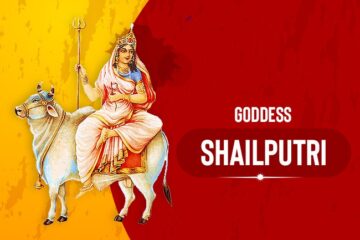Gokulashtami, or Krishna Janmashtami, is a wonderful and heartwarming festival celebrated throughout India with joy and devotion. Lord Krishna, one of Hinduism’s most revered deities, was born on this auspicious day. This annual celebration holds great significance for Hindus as it symbolizes the playful nature, wisdom, and spiritual teachings of Lord Krishna. In this blog, we will explore the fascinating array of traditions and rituals and the profound spiritual significance behind Krishna Janmashtami.
Legend of Krishna’s Birth
The story of Lord Krishna’s birth is an integral part of Hindu mythology and scriptures, particularly the Bhagavad Gita. As per Hindu beliefs, Lord Krishna was born on the eighth day (Ashtami) of the dark fortnight in the month of Bhadrapada (August–September) during the Dwapara Yuga. He came down to Earth in the city of Mathura to defeat the wicked king, Kansa, and reestablish righteousness (dharma).
Spiritual significance
- Divine Playfulness: Lord Krishna is often depicted as the embodiment of divine playfulness. His mischievous acts as a child, such as stealing butter (Makhan Chor) and playing the flute, symbolize the joy and spontaneity that can be found in spirituality. Janmashtami reminds us to find joy in devotion and spirituality amidst life’s challenges.
- Teachings of the Bhagavad Gita: Lord Krishna’s teachings to Arjuna on the battlefield of Kurukshetra are encapsulated in the Bhagavad Gita. This sacred scripture imparts profound wisdom on duty, righteousness, and the path to self-realization. Janmashtami serves as a reminder to reflect upon these timeless teachings and apply them to our lives.
- Love and Devotion: Lord Krishna is also known for his amorous and divine love, particularly with Radha. This symbolises the eternal love and devotion between the soul and the divine. Janmashtami encourages devotees to cultivate a deep, unconditional love for the Supreme Being.
Festivities and traditions
- Fasting: Many devotees observe a day-long fast on Krishna Janmashtami, breaking it only at midnight, the time when Lord Krishna is believed to have been born.
- Decorations: Homes and temples are adorned with colorful rangoli, flowers, and pictures of Lord Krishna. Cradles are prepared to represent the birth of the Lord.
- Devotional Singing and Dancing: Bhajans (devotional songs) and kirtans (singing of hymns) fill the air as devotees gather to sing and dance in praise of Lord Krishna.
- Dahi Handi: In Maharashtra, a popular tradition involves forming human pyramids to break a pot (handi) filled with curd, which symbolizes the playful nature of Lord Krishna.
- Midnight Celebration: Lord Krishna’s birth is celebrated at midnight with enormous fervor, accompanied by an aarti (ritualistic prayer carried out with lamps), bhajans, and prasad (sacred food offering).
- Reading of the Bhagavad Gita: Many devotees choose to read or recite verses from the Bhagavad Gita on this auspicious day.
Krishna Janmashtami is a time to connect with the teachings, love, and wisdom of Lord Krishna. It’s a reminder to us all to live a life of righteousness, devotion, and joy. As we come together as devotees, we strengthen our spiritual bond with the divine, and we find comfort and inspiration in Lord Krishna’s timeless teachings. Let us be inspired by Krishna Janmashtami to walk in the footsteps of Lord Krishna on the path of truth, love, and devotion.
Check out some interesting & customized Return gifts with Little Krishna Theme at www.weddingreturngifts.com




